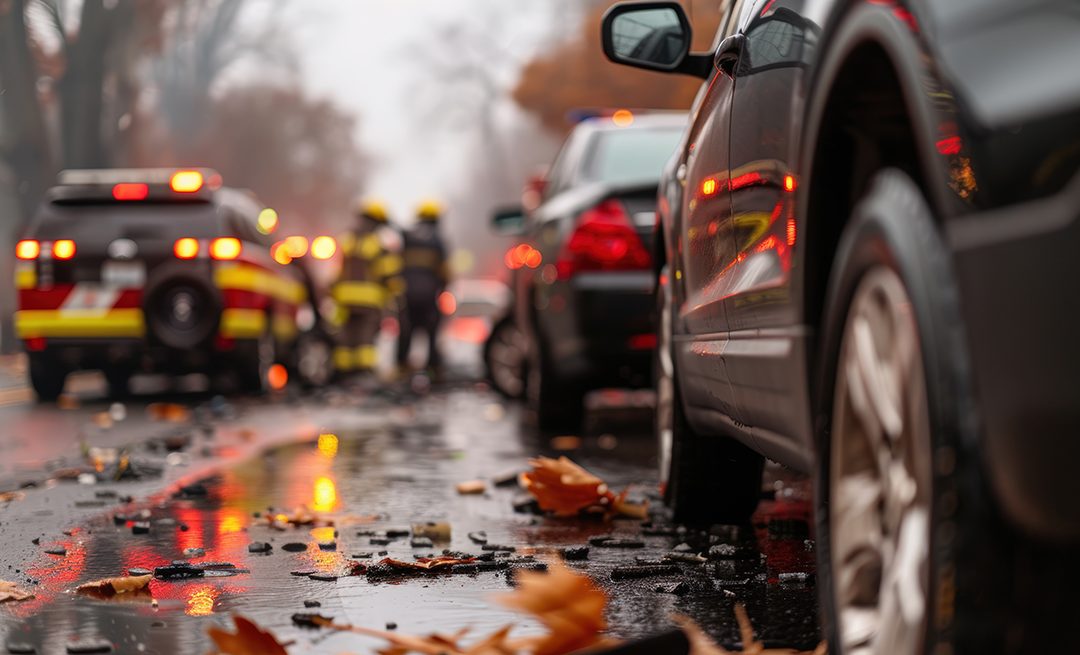Listen to our podcast
A pile-up accident, also called a chain-reaction crash, involves three or more vehicles colliding in a series of rear-end or side-impact crashes. These accidents, often seen on busy highways like the Cross Bronx Expressway or congested roads in White Plains, Yonkers, and Manhattan, pose a heightened risk of severe injuries or fatalities due to their complexity. Common causes include poor visibility, sudden braking, distracted driving, or inclement weather.
At the Law Offices of Norman Gershon, we understand how overwhelming these multi-car accidents can be. With decades of experience representing clients across Westchester and NYC, we’re here to guide you through the legal challenges and ensure you receive the compensation you deserve.
Understanding Fault in Pile-Up Accidents
Determining fault in a pile-up is rarely straightforward. Because multiple drivers and vehicles are involved, responsibility is often shared among parties.
Key Factors in Assigning Fault
- The Initial Collision: The driver who triggers the first crash typically bears the greatest responsibility. For instance, if someone rear-ends another car while speeding or texting, their actions may set off the chain reaction.
- Subsequent Drivers’ Actions: Drivers who fail to maintain a safe following distance or are distracted may also share liability for escalating the pile-up.
- Road and Weather Conditions: External factors, such as icy roads or dense fog, can complicate fault determinations but do not absolve drivers of their duty to exercise caution.
In New York, the legal principle of comparative negligence is crucial. Even if you’re partially at fault, you may still recover damages, though your compensation will be reduced by your percentage of responsibility.
How Fault Is Determined in a Multi-Car Accident
1. Investigating the First Collision
The first collision in a pile-up often sets the chain reaction in motion. Accident investigators analyze evidence like skid marks, vehicle damage, and debris patterns to identify the initial cause.
In today’s digital age, dashcam footage and surveillance cameras often play a vital role. For example, video may show whether the first driver braked too late, swerved recklessly, or encountered an unavoidable hazard.
2. Evaluating Other Contributing Factors
While the first driver may bear primary responsibility, other factors—such as tailgating, distracted driving, or unsafe lane changes—often contribute to the extent of the pile-up. For example:
- A driver tailgating in Yonkers may fail to stop in time and add to the collision.
- Heavy snow on the Hutchinson River Parkway may reduce visibility and increase stopping distances, complicating the accident dynamics.
Investigators use police reports, witness statements, and vehicle positions to piece together the sequence of events.
Comparative Negligence: How It Works in New York
New York’s comparative negligence law divides liability among all drivers based on their degree of fault. This ensures a fair allocation of responsibility but impacts your compensation.
Example:
If you’re 25% at fault for following too closely and your damages amount to $80,000, you would receive $60,000 after accounting for your share of fault.
This system protects accident victims by allowing partial recovery, even if they contributed to the accident. However, having strong evidence—like medical records, photos, and witness accounts—is critical for maximizing your claim.
Insurance Claims After a Pile-Up Accident
Filing an insurance claim for a pile-up in NYC or Westchester can be daunting. Under New York’s no-fault insurance system, your insurer will initially cover medical expenses and lost wages up to the limits of your Personal Injury Protection (PIP) policy, regardless of fault.
When to File a Claim Against Other Drivers
If your damages exceed your PIP limits or involve serious injuries, you may need to file a claim against the at-fault driver(s). In a pile-up, this often means identifying which driver—or combination of drivers—shares the greatest liability.
Tips for a Strong Insurance Claim
- Take photos of the accident scene, including all vehicle damage and road conditions.
- Gather contact information from witnesses.
- Obtain a copy of the police report.
At the Law Offices of Norman Gershon, we work closely with accident reconstruction experts and insurance adjusters to ensure our clients receive fair compensation for their injuries and losses.
Protect Yourself: Steps to Minimize Risk
While some accidents are unavoidable, defensive driving can reduce your risk of being involved in a pile-up. Remember to:
- Maintain a safe following distance, especially during heavy traffic on the Bronx River Parkway or the FDR Drive.
- Adjust your speed for weather conditions, such as rain or snow common in White Plains and Yonkers during winter months.
- Avoid distractions like texting or adjusting navigation systems while driving.
Why You Need an Experienced Lawyer
The legal and financial aftermath of a pile-up accident can be overwhelming. With multiple drivers, insurance policies, and liability questions involved, it’s critical to have an experienced personal injury lawyer by your side.
At the Law Offices of Norman Gershon, we have a proven track record of securing compensation for accident victims throughout Westchester County and NYC. Whether you need help filing an insurance claim, negotiating with insurers, or pursuing a personal injury lawsuit, we’re here to fight for you.
Contact the Law Offices of Norman Gershon
If you’ve been injured in a pile-up accident in White Plains, Yonkers, or anywhere in New York City, don’t face the challenges alone. Contact us today at (914) 485-1444 for a free consultation. With over 35 years of experience and hundreds of millions recovered for our clients, you can trust us to protect your rights and secure the compensation you deserve.


Recent Comments